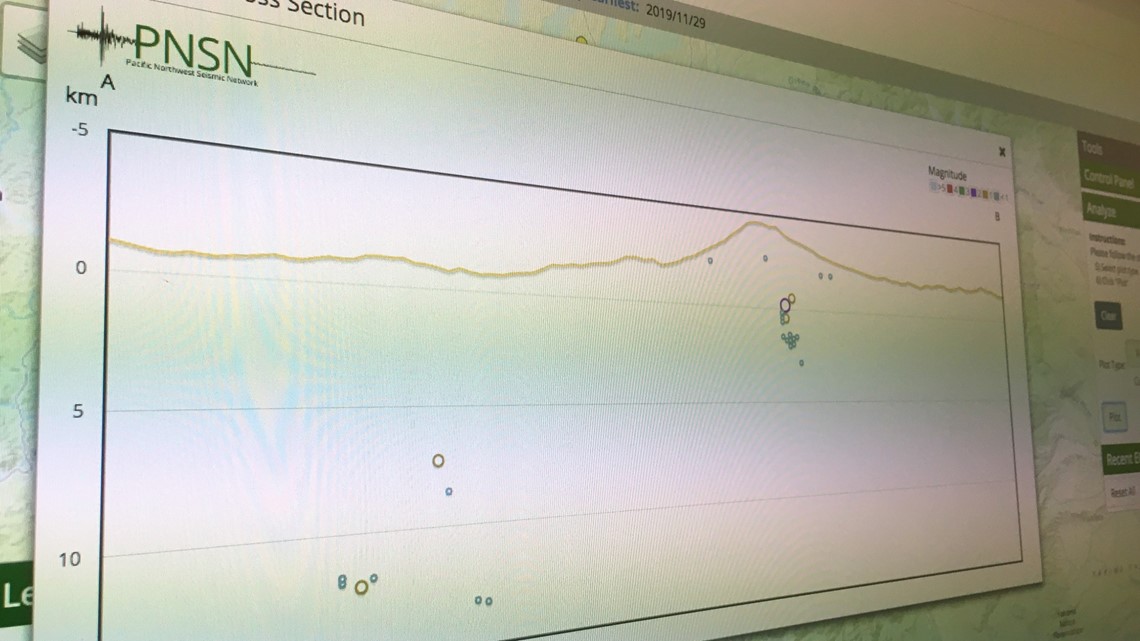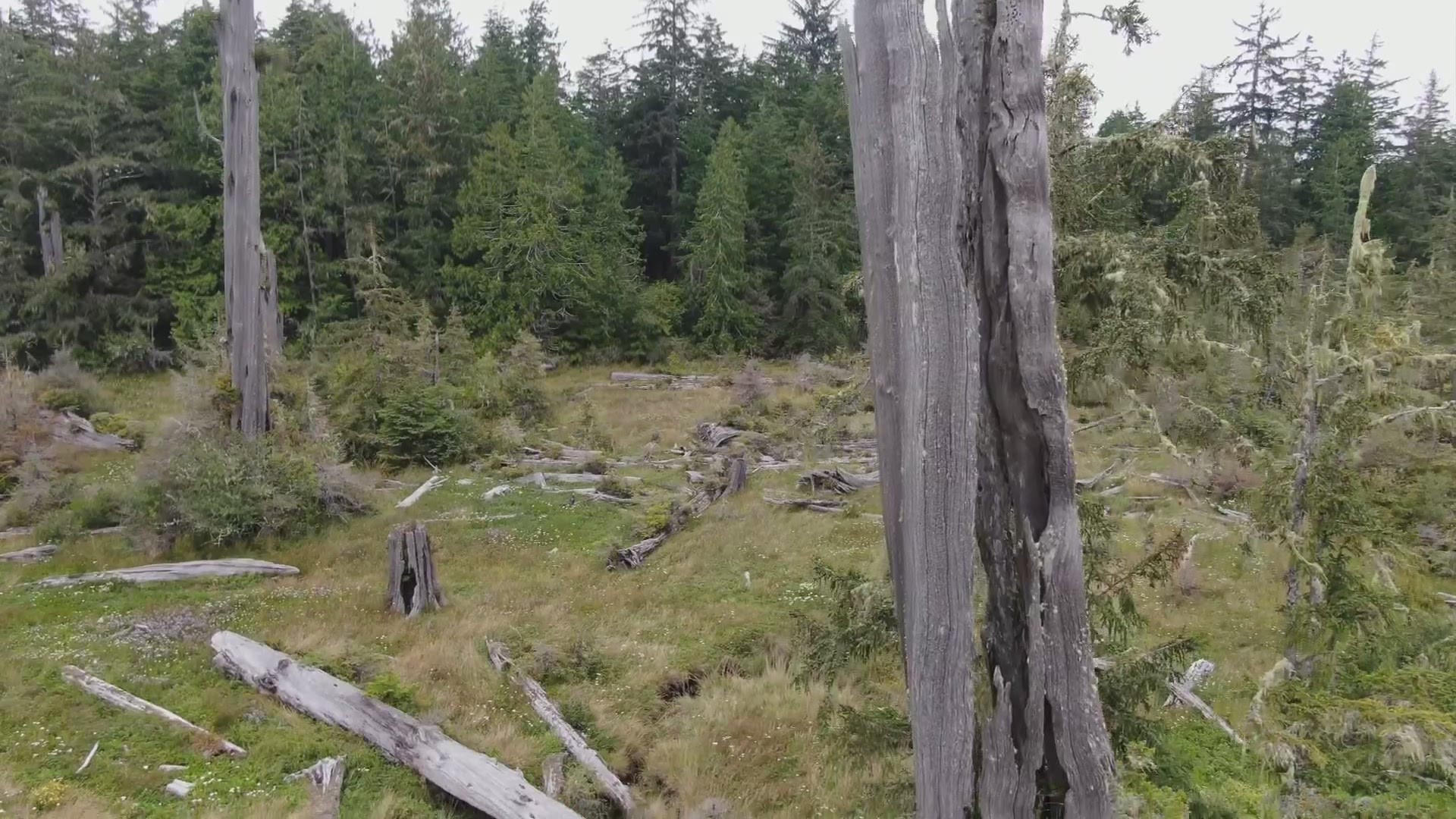SEATTLE — Clusters of small earthquakes have popped off under western Washington in the last month, with many of them happening right under the Mount Rainier volcano.
These clusters have been seen before and while these quakes are not considered dangerous, they do more to help scientists better locate faults. In the case of Mount Rainier, these clusters paint a picture of how the volcano is structured underground.
"When we look at background activity for any volcano, the earthquakes are giving us a cartoon sense of what's going on underneath there," said Wes Thelen, a volcano seismologist for the Cascades Volcano Observatory in Vancouver, Washington. "Unfortunately, we don't have the satellite coverage like meteorologists do that let us know with that kind of clarity."
In the last two weeks, 23 quakes have popped off under the mountain-- 11 in a 48-hour period ending early Dec. 12. The largest was a magnitude of 2.3.


There were swarms of quakes in October and November as well, and Thelen said there are about one of these active periods every year.
Despite all that, Thelen said these are not necessarily signs of an impending eruption.
A quake once every hour or two is not a surprise. Eruptions are usually preceded by intense periods of larger earthquakes every hour.
"We think these are happening in cracks, where we think there's fluid, water most likely being forced through those cracks, and generating a little bit of slip. We're seeing each of those little cracks light up," Thelen said.
Thelen said that when Mount Rainier eventually erupts, it could be that those same cracks will move volcanic material upward.
"We don't know for sure, but these are certainly viable places we can move material, be it water at this point or some other fluid down the road,” Thelen said.
Hot water, steam, gasses and even the molten rock (or magma) can follow those paths.
With more seismometers deployed, scientists can see more and more quakes getting picked up, even the smaller magnitude ones usually associated with volcanoes.
That technology can help scientists can begin to better map out the earthquake system underground. When an eruption does present itself, scientists at Cascades Volcano Observatory could have a better sense for how that eruption could play out.


